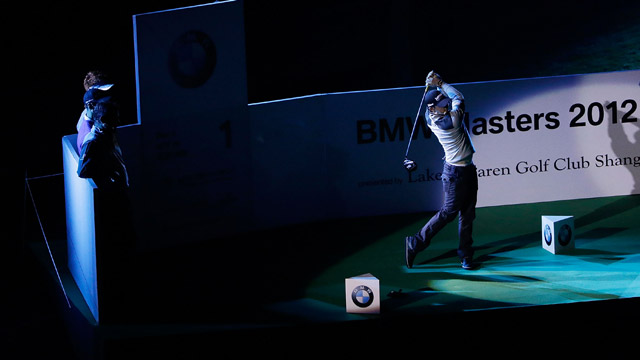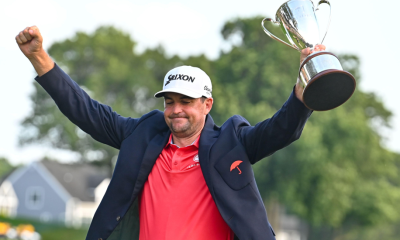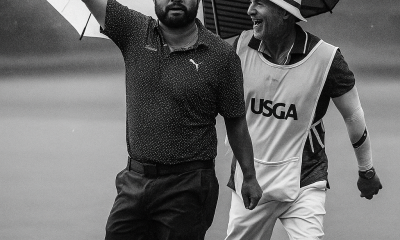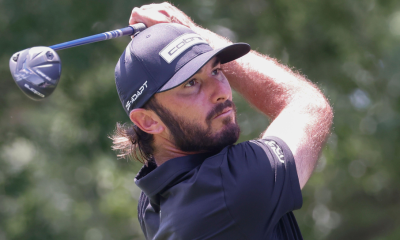Opinion & Analysis
Bright or bleak? The future of the European Tour

By Kees Jan Stel
GolfWRX European Tour Contributor
With Europeans Rory McIlroy, Luke Donald, Lee Westwood, Justin Rose, Ian Poulter, Sergio Garcia, Graham McDowell and Padraig Harrington already playing in America, the top European golfers spent more time on the other side of the Atlantic than on home soil.
The increasing desire to play in America has much to do with the sustained acceptance and success of the PGA Tour’s FedexCup. And who can blame the players? The total purse of around $260 million in prize money on the PGA Tour is almost twice the amount in Europe. Moneywise, it’s a no brainer to cross the Atlantic once equipped with the required exemptions.
The good news for Europe is that more stars in America will help the old continent as well. Playing on the PGA Tour will make them better players and thus increase their chances of landing a major championship, further improving Europe’s record in team events such as the Ryder Cup. But there is an obvious downside. Englishman David Lynn, who came second in this year’s PGA Championship, is one of the European Tour players that has the credentials to give the PGA Tour a shot, but he is not intent to do so yet.
“It’s not good for the Tour if guys all keep playing in America all the time,” Lynn said. “If guys just have that attitude, like ‘I’ve got the right to go and play over there, it seriously doesn’t do a lot of good for the European Tour in the future. It is a vicious circle where America keeps getting stronger and Europe keeps getting weaker.”
Complaining never solves problems. So instead of staring at the success of the PGA Tour, the leaders of the European Tour recognized the flaws and decided to up the specs on their own tour. And it seems they are heading in the right direction, since there will be a substantial revamp of the European Tour’s calendar in 2013.
With the economic climate in Europe still heavily under par (the European Tour lost six tournaments in one year due to lack of funding), it is clear that the growth of the European Tour will come from outside of Europe. There are 46 events on the European Tour, 24 of which are played outside the continent and eight of which that are played in Asia.
The recently played Turkish Airlines World Golf Final in Belek will become an official, 78-man stroke play event on the European Tour next year with a purse that will surely be one of the better ones in the season. The Turks are after a bid to stage the Olympics in 2020, and are eager to show the world they can pull off events large events like the World Golf Final.
There is also BMW Masters in Shanghai, China. In 2011, it was an exhibition tournament, but this year it was an official part of the European Tour with an 80-man field and a $7 million purse.
 Last but not least there is the inaugural Tournament of Hope that will be held in South Africa in late November of next year. Co-sanctioned by the European Tour and the Sunshine Tour, it is a 10-year signed event with a $9 million purse, which places it even above the four majors and the World Golf Championships in terms of total prize money. With the $7 million WGC-HSBC Champions in China, the $6 million Singapore Open and the $7 million Dubai World Championship already scheduled, all of a sudden the end of the year on the European Tour looks completely different. Rory McIlroy was clear about it:
Last but not least there is the inaugural Tournament of Hope that will be held in South Africa in late November of next year. Co-sanctioned by the European Tour and the Sunshine Tour, it is a 10-year signed event with a $9 million purse, which places it even above the four majors and the World Golf Championships in terms of total prize money. With the $7 million WGC-HSBC Champions in China, the $6 million Singapore Open and the $7 million Dubai World Championship already scheduled, all of a sudden the end of the year on the European Tour looks completely different. Rory McIlroy was clear about it:
“I think that’s what the European Tour needs to do, give it some sort of buzz like the PGA Tour has,” he said. “It will mean a very busy end to the season for us, but an exciting one too.”
The 2013 FedExCup Playoffs will mark the official end of the PGA Tour’s 2013 official season. Competition for the 2013-2014 FedExCup will resume three weeks later with the PGA Tour’s Fall Series. Much of the refurbished European Tour season will be not be played during the ultra-rich FedExCup Playoffs, but during the Fall Series, which should give the European Tour’s more lucrative season-ending events a boost.
It will be interesting to see how players deal with the serious amounts of dollars and ranking points that all of a sudden are available. Not only it will give the top players interesting options, it also leaves a mouthwatering prospect for golf fans who have gotten used to a fading end to the season once the Wannamaker Trophy was presented.
Currently, European Tour rules state that its members must play at least 13 events in a calendar year (up from 11 last year). But it significantly helped make itself more attractive to top international talent by doing what the PGA Tour has done for years, making participation in the Ryder Cup and Presidents Cup counts towards membership (the Seve Trophy, a biennial golf tournament between teams of professional male golfers representing Great Britain & Ireland and Continental Europe, will also count toward membership). Since the four major championships and all the WGCs already count toward membership on both tours, the strain of joining the European Tour will be much less for players.
Rory McIlroy said in Turkey that playing both Tours was clearly on his mind, in particular since he has never won the Harry Vardon Trophy*, which is given to the Order of Merit winner (leading money winner) on the European Tour. Not that playing on both the European and the PGA Tour is easy — it requires serious travelling and intelligent planning. On the other hand, Luke Donald successfully showed last year it can be done and Rory McIlroy is close to pulling it off this year. Tiger Woods also said in Turkey that he is contemplating membership of the European Tour. This year, including the Ryder Cup, Woods fell only four events short of the 13-tournament minimum (4 majors, 3 WGCs, and the European Tour’s Abu Dhabi Championship).
Will the exile of Europe’s best players hurt the European Tour? Not necessarily, as long as they decide to play on the European Tour as well. That would indicate that they will not play on European soil as often, since the restructuring of the European Tour’s end of the season will mainly take place in Asia and Africa. That may lead to Rory McIlroy not playing in his own Irish Open and Lee Westwood and Luke Donald not playing the BMW PGA Championship (Wentworth). But if it means that in the bargain players such as Tiger Woods become members of the European Tour and Europe remains as dominant as it is in Ryder Cup, no European will complain.
*The Harry Vardon Trophy should not be confused with the Vardon Trophy, which is awarded by the PGA of America to the player with the lowest scoring average on the PGA Tour.
Opinion & Analysis
The 2 primary challenges golf equipment companies face

As the editor-in-chief of this website and an observer of the GolfWRX forums and other online golf equipment discourse for over a decade, I’m pretty well attuned to the grunts and grumbles of a significant portion of the golf equipment purchasing spectrum. And before you accuse me of lording above all in some digital ivory tower, I’d like to offer that I worked at golf courses (public and private) for years prior to picking up my pen, so I’m well-versed in the non-degenerate golf equipment consumers out there. I touched (green)grass (retail)!
Complaints about the ills of and related to the OEMs usually follow some version of: Product cycles are too short for real innovation, tour equipment isn’t the same as retail (which is largely not true, by the way), too much is invested in marketing and not enough in R&D, top staffer X hasn’t even put the new driver in play, so it’s obviously not superior to the previous generation, prices are too high, and on and on.
Without digging into the merits of any of these claims, which I believe are mostly red herrings, I’d like to bring into view of our rangefinder what I believe to be the two primary difficulties golf equipment companies face.
One: As Terry Koehler, back when he was the CEO of Ben Hogan, told me at the time of the Ft Worth irons launch, if you can’t regularly hit the golf ball in a coin-sized area in the middle of the face, there’s not a ton that iron technology can do for you. Now, this is less true now with respect to irons than when he said it, and is less and less true by degrees as the clubs get larger (utilities, fairways, hybrids, drivers), but there remains a great deal of golf equipment truth in that statement. Think about it — which is to say, in TL;DR fashion, get lessons from a qualified instructor who will teach you about the fundamentals of repeatable impact and how the golf swing works, not just offer band-aid fixes. If you can’t repeatably deliver the golf club to the golf ball in something resembling the manner it was designed for, how can you expect to be getting the most out of the club — put another way, the maximum value from your investment?
Similarly, game improvement equipment can only improve your game if you game it. In other words, get fit for the clubs you ought to be playing rather than filling the bag with the ones you wish you could hit or used to be able to hit. Of course, don’t do this if you don’t care about performance and just want to hit a forged blade while playing off an 18 handicap. That’s absolutely fine. There were plenty of members in clubs back in the day playing Hogan Apex or Mizuno MP-32 irons who had no business doing so from a ballstriking standpoint, but they enjoyed their look, feel, and complementary qualities to their Gatsby hats and cashmere sweaters. Do what brings you a measure of joy in this maddening game.
Now, the second issue. This is not a plea for non-conforming equipment; rather, it is a statement of fact. USGA/R&A limits on every facet of golf equipment are detrimental to golf equipment manufacturers. Sure, you know this, but do you think about it as it applies to almost every element of equipment? A 500cc driver would be inherently more forgiving than a 460cc, as one with a COR measurement in excess of 0.83. 50-inch shafts. Box grooves. And on and on.
Would fewer regulations be objectively bad for the game? Would this erode its soul? Fortunately, that’s beside the point of this exercise, which is merely to point out the facts. The fact, in this case, is that equipment restrictions and regulations are the slaughterbench of an abundance of innovation in the golf equipment space. Is this for the best? Well, now I’ve asked the question twice and might as well give a partial response, I guess my answer to that would be, “It depends on what type of golf you’re playing and who you’re playing it with.”
For my part, I don’t mind embarrassing myself with vintage blades and persimmons chasing after the quasi-spiritual elevation of a well-struck shot, but that’s just me. Plenty of folks don’t give a damn if their grooves are conforming. Plenty of folks think the folks in Liberty Corner ought to add a prison to the museum for such offences. And those are just a few of the considerations for the amateur game — which doesn’t get inside the gallery ropes of the pro game…
Different strokes in the game of golf, in my humble opinion.
Anyway, I believe equipment company engineers are genuinely trying to build better equipment year over year. The marketing departments are trying to find ways to make this equipment appeal to the broadest segment of the golf market possible. All of this against (1) the backdrop of — at least for now — firm product cycles. And golfers who, with their ~15 average handicap (men), for the most part, are not striping the golf ball like Tiger in his prime and seem to have less and less time year over year to practice and improve. (2) Regulations that massively restrict what they’re able to do…
That’s the landscape as I see it and the real headwinds for golf equipment companies. No doubt, there’s more I haven’t considered, but I think the previous is a better — and better faith — point of departure when formulating any serious commentary on the golf equipment world than some of the more cynical and conspiratorial takes I hear.
Agree? Disagree? Think I’m worthy of an Adam Hadwin-esque security guard tackle? Let me know in the comments.
@golfoncbs The infamous Adam Hadwin tackle ? #golf #fyp #canada #pgatour #adamhadwin ? Ghibli-style nostalgic waltz – MaSssuguMusic
Podcasts
Fore Love of Golf: Introducing a new club concept

Episode #16 brings us Cliff McKinney. Cliff is the founder of Old Charlie Golf Club, a new club, and concept, to be built in the Florida panhandle. The model is quite interesting and aims to make great, private golf more affordable. We hope you enjoy the show!
Opinion & Analysis
On Scottie Scheffler wondering ‘What’s the point of winning?’

Last week, I came across a reel from BBC Sport on Instagram featuring Scottie Scheffler speaking to the media ahead of The Open at Royal Portrush. In it, he shared that he often wonders what the point is of wanting to win tournaments so badly — especially when he knows, deep down, that it doesn’t lead to a truly fulfilling life.
View this post on Instagram
“Is it great to be able to win tournaments and to accomplish the things I have in the game of golf? Yeah, it brings tears to my eyes just to think about it because I’ve literally worked my entire life to be good at this sport,” Scheffler said. “To have that kind of sense of accomplishment, I think, is a pretty cool feeling. To get to live out your dreams is very special, but at the end of the day, I’m not out here to inspire the next generation of golfers. I’m not out here to inspire someone to be the best player in the world, because what’s the point?”
Ironically — or perhaps perfectly — he went on to win the claret jug.
That question — what’s the point of winning? — cuts straight to the heart of the human journey.
As someone who’s spent over two decades in the trenches of professional golf, and in deep study of the mental, emotional, and spiritual dimensions of the game, I see Scottie’s inner conflict as a sign of soul evolution in motion.
I came to golf late. I wasn’t a junior standout or college All-American. At 27, I left a steady corporate job to see if I could be on the PGA Tour starting as a 14-handicap, average-length hitter. Over the years, my journey has been defined less by trophies and more by the relentless effort to navigate the deeply inequitable and gated system of professional golf — an effort that ultimately turned inward and helped me evolve as both a golfer and a person.
One perspective that helped me make sense of this inner dissonance around competition and our culture’s tendency to overvalue winning is the idea of soul evolution.
The University of Virginia’s Division of Perceptual Studies has done extensive research on reincarnation, and Netflix’s Surviving Death (Episode 6) explores the topic, too. Whether you take it literally or metaphorically, the idea that we’re on a long arc of growth — from beginner to sage elder — offers a profound perspective.
If you accept the premise literally, then terms like “young soul” and “old soul” start to hold meaning. However, even if we set the word “soul” aside, it’s easy to see that different levels of life experience produce different worldviews.
Newer souls — or people in earlier stages of their development — may be curious and kind but still lack discernment or depth. There is a naivety, and they don’t yet question as deeply, tending to see things in black and white, partly because certainty feels safer than confronting the unknown.
As we gain more experience, we begin to experiment. We test limits. We chase extreme external goals — sometimes at the expense of health, relationships, or inner peace — still operating from hunger, ambition, and the fragility of the ego.
It’s a necessary stage, but often a turbulent and unfulfilling one.
David Duval fell off the map after reaching World No. 1. Bubba Watson had his own “Is this it?” moment with his caddie, Ted Scott, after winning the Masters.
In Aaron Rodgers: Enigma, reflecting on his 2011 Super Bowl win, Rodgers said:
“Now I’ve accomplished the only thing that I really, really wanted to do in my life. Now what? I was like, ‘Did I aim at the wrong thing? Did I spend too much time thinking about stuff that ultimately doesn’t give you true happiness?’”
Jim Carrey once said, “I think everybody should get rich and famous and do everything they ever dreamed of so they can see that it’s not the answer.”
Eventually, though, something shifts.
We begin to see in shades of gray. Winning, dominating, accumulating—these pursuits lose their shine. The rewards feel more fleeting. Living in a constant state of fight-or-flight makes us feel alive, yes, but not happy and joyful.
Compassion begins to replace ambition. Love, presence, and gratitude become more fulfilling than status, profits, or trophies. We crave balance over burnout. Collaboration over competition. Meaning over metrics.
Interestingly, if we zoom out, we can apply this same model to nations and cultures. Countries, like people, have a collective “soul stage” made up of the individuals within them.
Take the United States, for example. I’d place it as a mid-level soul: highly competitive and deeply driven, but still learning emotional maturity. Still uncomfortable with nuance. Still believing that more is always better. Despite its global wins, the U.S. currently ranks just 23rd in happiness (as of 2025). You might liken it to a gifted teenager—bold, eager, and ambitious, but angsty and still figuring out how to live well and in balance. As much as a parent wants to protect their child, sometimes the child has to make their own mistakes to truly grow.
So when Scottie Scheffler wonders what the point of winning is, I don’t see someone losing strength.
I see someone evolving.
He’s beginning to look beyond the leaderboard. Beyond metrics of success that carry a lower vibration. And yet, in a poetic twist, Scheffler did go on to win The Open. But that only reinforces the point: even at the pinnacle, the question remains. And if more of us in the golf and sports world — and in U.S. culture at large — started asking similar questions, we might discover that the more meaningful trophy isn’t about accumulating or beating others at all costs.
It’s about awakening and evolving to something more than winning could ever promise.























Pingback: GolfWRX.com – Bright or bleak? The future of the European Tour | Golf Products Reviews
Dave Sefton
Nov 2, 2012 at 12:51 pm
Another issue is the movement of tournaments away from the heartlands of golf support. Too many tournaments are being played in oil rich, fan -less desert wastelands. Only one PGA tournament is played in England each year (with The Open every other year). Fans and future players are being lost in this country, club memberships are down. George O’Grady is causing the demise of European golf. Only 3 players got on the ‘plane back to Europe after the Ryder Cup, this is a pattern which will continue and soon the Ryder Cup will also be staying on the US side of the Atlantic.